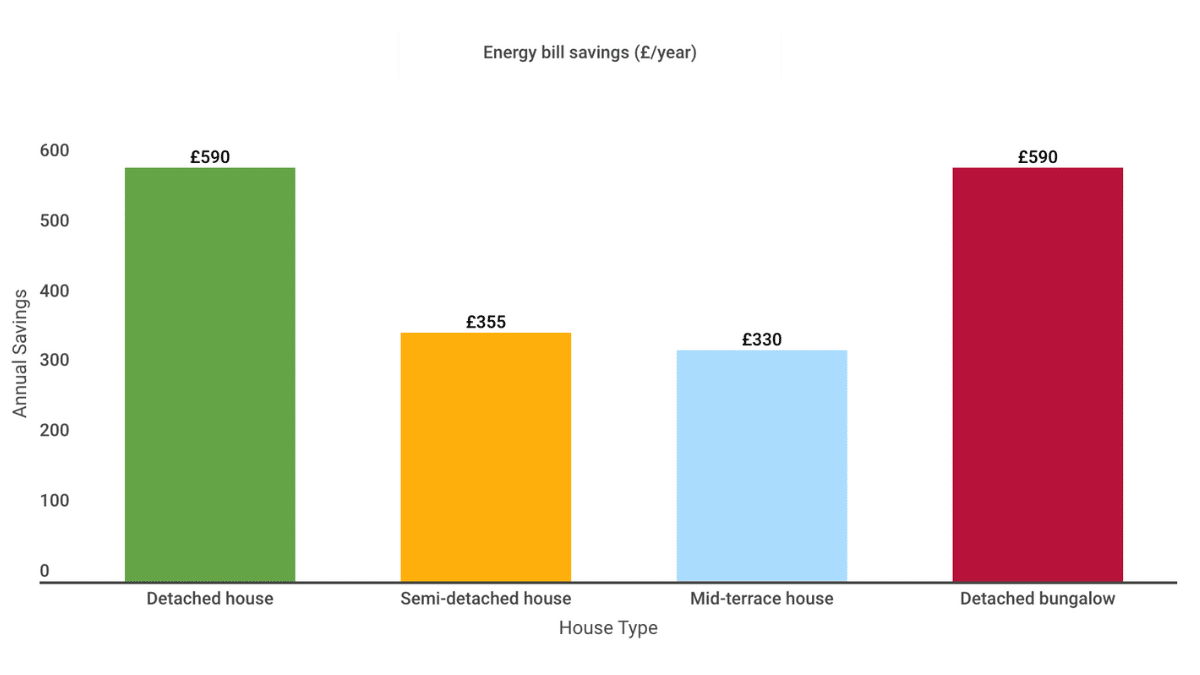Looking for ways to reduce your energy bill this spring? Use these 8 practical tips to lower energy usage and start saving money today.

£10 sign up bonus: Earn easy cash by watching videos, playing games, and entering surveys.
Get a £10 sign up bonus when you join today.
Join Swagbucks here >>
As the government ends its energy support scheme with a £67 reduction in costs this month, many Brits are concerned about the rising costs of their energy bills.
However, now spring is on the way, there are plenty of ways you can change your habits and start to save money on energy bills.
To help households save money, NetVoucherCodes.co.uk researched some practical solutions to lower energy usage around the home now it’s spring, and we looked into what those savings might look like on your annual bill.
Here are some of their top tips:
Use a shower timer – £95 savings
Now the weather is getting warmer, you might not need to spend as long getting cosy in a hot shower.
So, why not try and limit your showers and make a saving?
With a 4 minute shower timer, you can keep an eye on how long you’ve been watching and make savings on your energy bill, plus use less water too (handy if you’re on a water meter).
Use eco settings – up to £500
You can save up to £500 a year using the watching machine eco settings, plus the ones on your dishwasher (and tumbler dryer…do you really need to use it in spring?).
Utilise the energy-saving functions on appliances, and you will reduce both energy and water usage.
The eco-settings use a balance of time, temperate and water. Because of this, it can wash and rinse at lower temperatures, making it better for your bills.
Invest in solar power banks – £5 saving per device
Instead of leaving chargers on all day, use solar power banks to store energy and power devices in the evening.
Ok, admittedly, you’re not going to see massive savings, but it’s still something!
Assuming an average power bank capacity of 10,000 mAh and a device charging requirement of 2,000 mAh per day, a solar power bank could save around 14 kWh of energy per year for each device charged. If we multiply this by the electricity rate of 33.2p/kWh (under the Energy Price Guarantee), the savings would be:
14 kWh x 33.2p/kWh = £4.65 per year per device charged.
But, that is just for one device. How many phones, tablets or other devices get charged each day? It can soon add up.
Turn off plugs – £65
Switch off all plug sockets when not in use, leaving the house, or going to sleep to prevent standby devices from draining energy.
The Energy Savins Trust estimates you can make a £65 saving, and turning the appliance off won’t affect their programming.
Using a smart plug or standby saver can turn off all appliances in one go and by voice command, which helps for plugs behind heavy furniture.
Take a look at the worst appliances to leave on standby.
Give radiators space – £125 saving
Fingers crossed, the weather will be better in spring, and you won’t need to use the radiators as much anyway.
However, while the days are brighter and longer, a chill can still be in the air during the evenings.
Keep furniture at least 10 – 15cm away from radiators to ensure proper airflow or warm air around your room. It will also prevent boilers from overworking. I’ve seen some refer to savings of £75, with an upper limit of £125 in annual savings.
This would come down to many factors, including the type of furniture again your radiator and how often you use your radiators.
A radiator shelf can also help throw heat into the room instead of rising to the ceiling.
Also, consider getting foil radiator panels to reflect heat into the room rather than the wall.
Swap to LED bulbs – £35 saving
Use LED bulbs instead of halogen bulbs to save energy and make the most of natural light.
They come in various shapes and fittings and can replace all other bulbs in your home.
You need to pay an upfront cost, but you will save around £35 a year on your energy bill.
Install smart devices – up to £150 saving
Use smart thermostats, smart meters and app-controlled lights to help visualise energy usage and reduce waste.
A study by the Energy Saving Trust found that households using a smart thermostat can save an average of 12% on their heating bill, which equates to approximately £75 to £155 per year, depending on the size of the home and the heating system used.
According to Tado, you will likely cut £154 yearly from your heating bill with a smart thermostat.
These estimates are made on assumptions on the size of your home, insulation levels and how much energy you used in the first place. Overall, you will likely save money as well as reduce carbon emissions.
You must also factor in the upfront costs of installing smart devices in your home.
Loft insulation – save £355
If you don’t have any loft installation, you can make a substantial annual saving.
According to the Energy Saving Trust, you can save £355 a year if you live in a semi-detached house, up to £590 for a detached house.

It’s also worth inspecting your loft insulation each year to prevent heat from escaping your home and reduce the need for radiators.
So, with these 8 ways to reduce energy usage around the home, you can take control of your energy bills and save money this spring. Happy penny-pinching!
- Where kids eat free this summer 2024 - 9 July 2024
- The Sun £9.50 Holiday – guide to a cheap UK break - 9 July 2024
- How to get FREE food and drinks – apps and other ideas - 9 July 2024

Leave a Reply